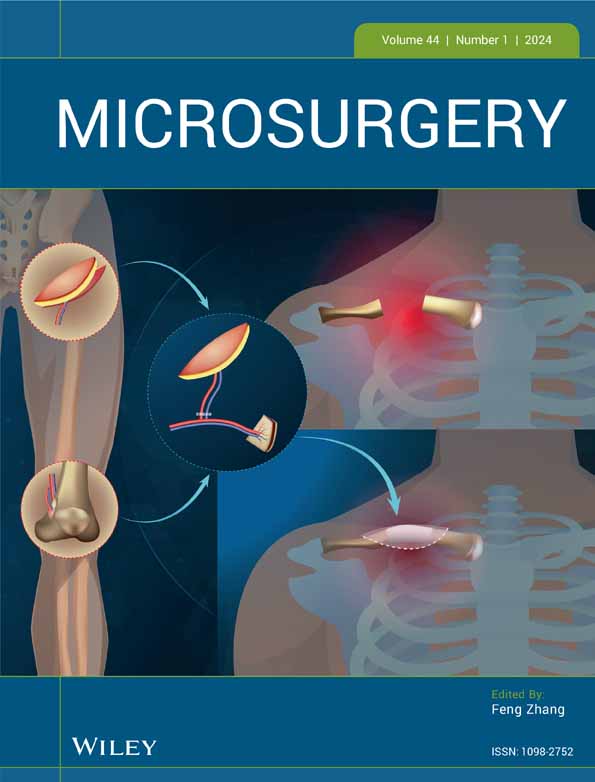Utilization of the internal mammary perforators as the recipient vessels for microsurgical breast reconstruction: A systematic review and meta-analysis of the literature
Michail Vourvachis and Mohammad R. Goodarzi contributed equally to this work and should therefore be considered joint-first authors.
Abstract
Background
The selection of reliable recipient vessels is essential for successful free tissue transfer. The use of internal mammary intercostal perforators (IMAPs), instead of the internal mammary vessels as the recipient vessels, has been described in breast reconstruction. Debates exist regarding the reliability of these perforators as recipient vessels because of their variability in location and caliber. The aim of this paper was to conduct a systematic literature review and meta-analysis to determine the reliability of the IMAPs as recipient vessels.
Methods
A systematic literature review was performed on the “PubMed,” “Medline,” “Ovid,” and “Cochrane library” databases for articles published from January 1990 to March 2021. Exclusion criteria were non-English studies, reports with case number less than 5, cadaveric or animal studies, and studies with incomplete postoperative outcomes. The reliability of using IMAPs for breast reconstruction was determined by assessing the reported rates of partial or complete flap failure and other complications (fat necrosis, skin necrosis, and requirement for revision surgery).
Results
Three hundred and sixteen cases in 13 studies were included for further analysis with more than 85% of the IMAPs suitable for anastomosis being located in the second and third intercostal spaces. Partial or total flap failure was reported in three of 316 patients (0.95%). The rate of other complications such as fat necrosis, skin necrosis, and requirement for revision surgery were all less than 5%.
Conclusion
With deliberate preoperative planning, delicate perioperative manipulation, and meticulous microvascular anastomosis, the internal mammary perforators can be used as reliable recipient vessels in microvascular breast reconstruction.
CONFLICT OF INTEREST STATEMENT
Mario F. Scaglioni is an Editorial Board member of Microsurgery and a co-author of this article. To minimize bias, they were excluded from all editorial decision-making related to the acceptance of this article for publication.
Open Research
DATA AVAILABILITY STATEMENT
Data sharing is not applicable to this article as no new data were created or analyzed in this study.




